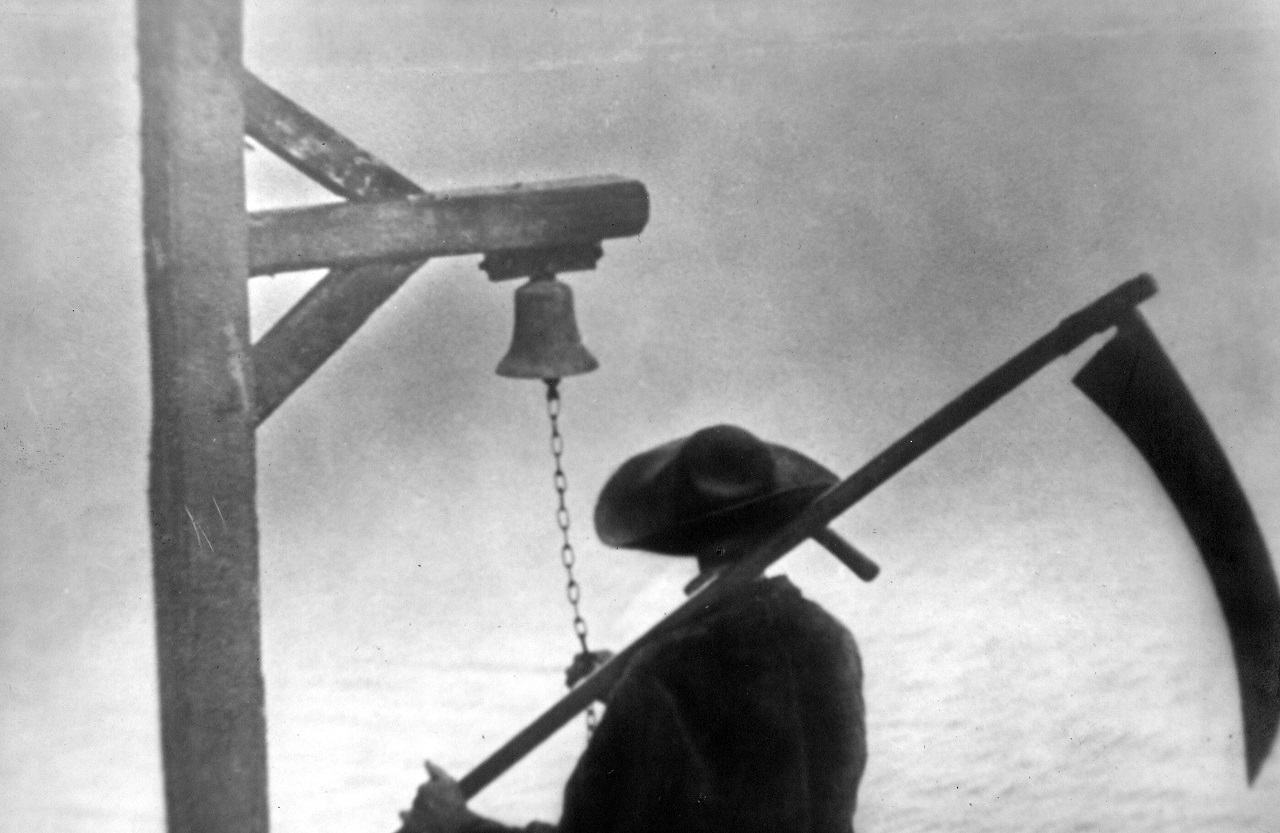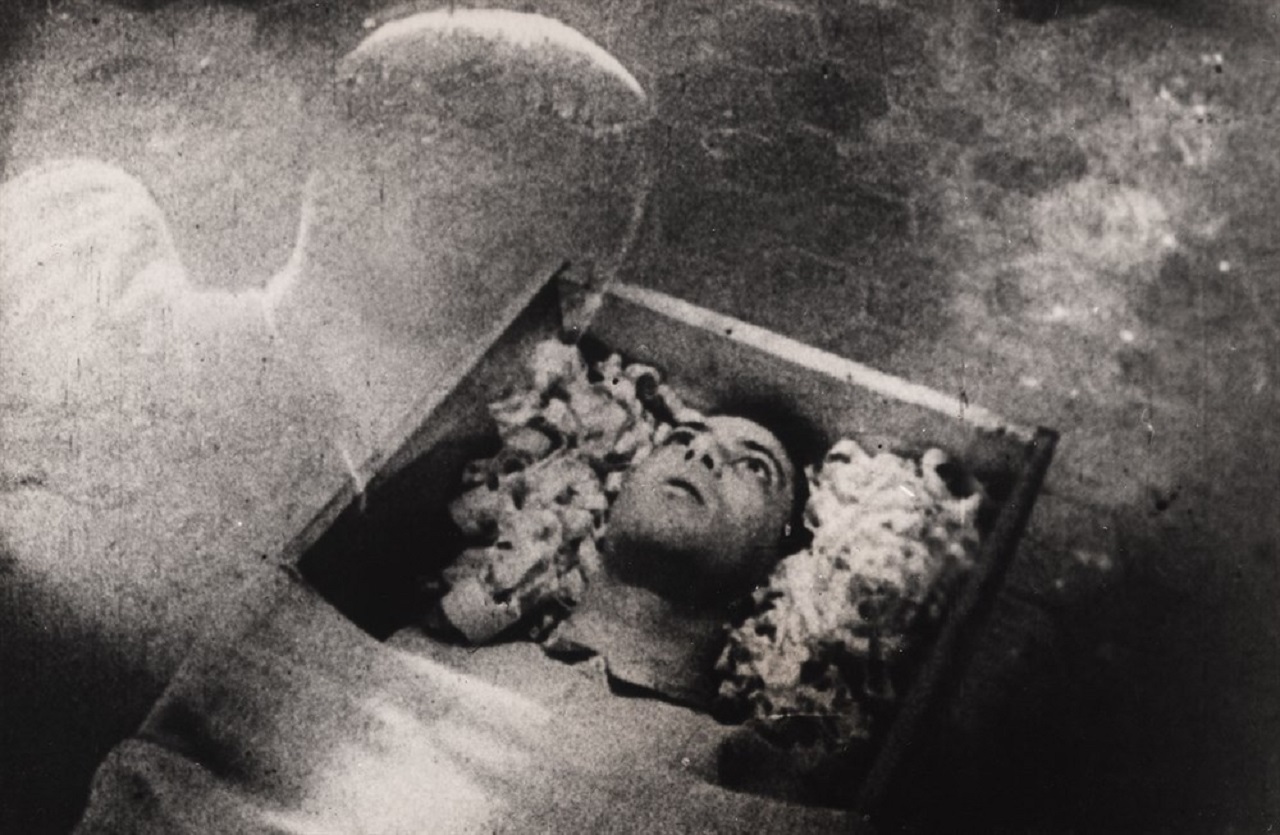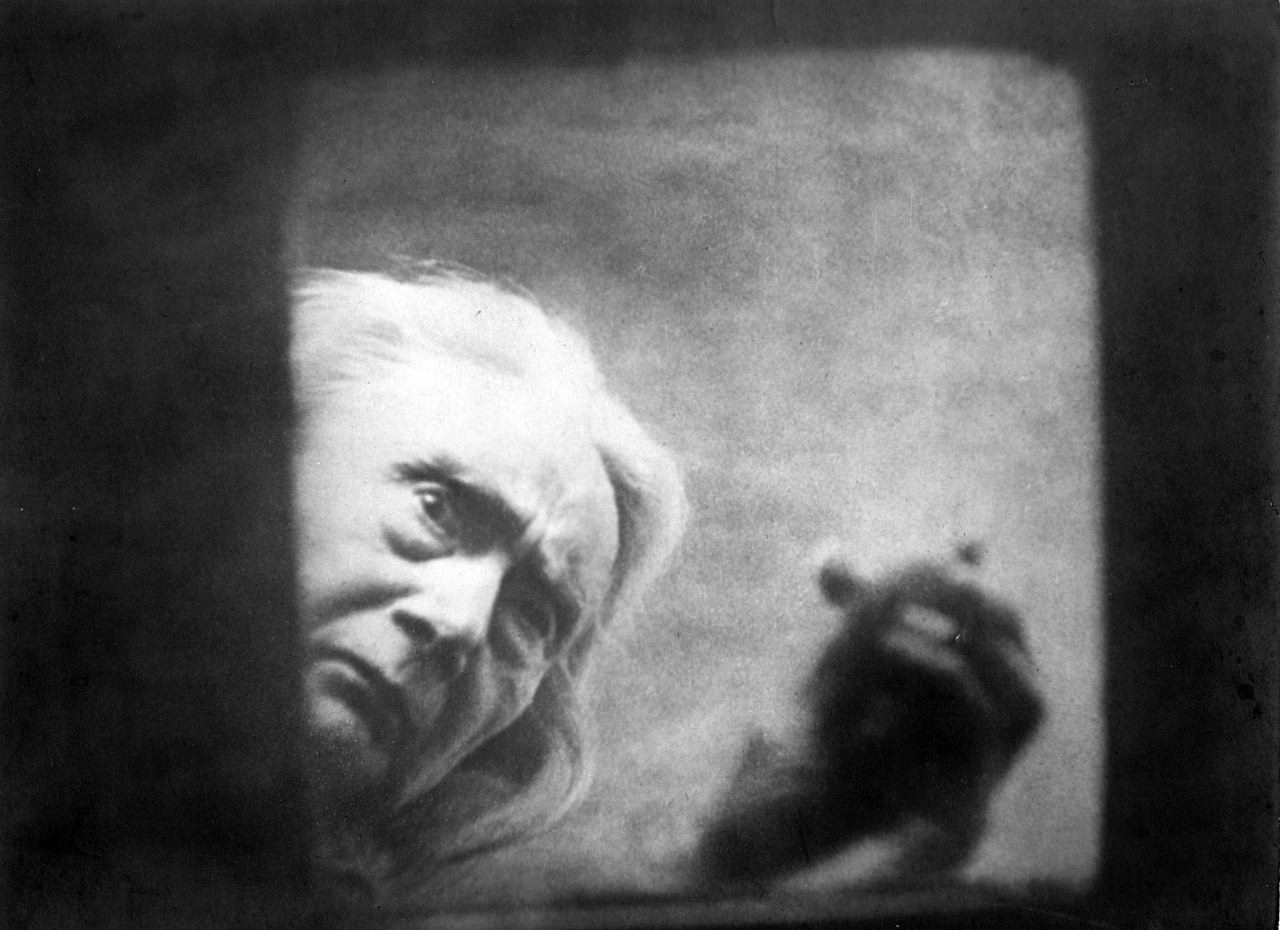aka Castle of Doom; The Strange Adventure of David Gray
Germany/France. 1932.
Crew
Director – Carl Dreyer, Screenplay – Carl Dreyer & Christian Jul, Based on the Short Story Carmilla by J. Sheridan Le Fanu, Producers – Carl Dreyer & Baron Nicholas de Gunzburg, Photography (b&w) – Rudolf Maté, Music – Wolfgang Zeller, Art Direction – Hans Bittman & Hermann Warm. Production Company – Les Films Carl Dreyer.
Cast
Julian West [Baron Nicholas de Gunzburg] (David Gray), Jan Hieronimko (The Doctor), Sybille Schmitz (Leone), Henriette Gerard (Margeurite Chopin), Rena Mandel (Gisele), Albert Bras (Alfred), Maurice Schutz (Lord of the Manor)
Plot
Occult researcher David Gray comes to the village of Courtempierre. After taking a room at the inn, Gray meets the lord of the manor who leaves him a book on vampires to be opened upon the occasion of his death. Gray meets the landlord’s daughter Leone who is weak due to blood loss from unknown causes. He realizes that this is because a vampire is draining her blood. Giving his own blood to save her, Gray falls into a blood-loss induced fevre dream during which he sees his own burial.
Vampyr is rare and sometimes hard to find classic. It has received high praised in a number of critical circles, with some even considering it one of the greatest horror films ever made. For all that, Vampyr was not a success when it was released – indeed, it resulted in the collapse of director Carl Dreyer’s production company, causing him to have a nervous breakdown and not return to filmmaking for an entire decade. Vampyr was not seen in the USA until 1948, nearly two decades after its release, where it was retitled Castle of Doom and much of its slow pace trimmed and the long periods of silence replaced by dubbed explanation.
In modern times, at least up until the video revolution, Vampyr was only seen via film society screenings. Even the video revolution has only provided a version that is poor in quality – the print faded, unevenly edited and with most copies being released in a form that has been severely letterboxed and run over with thick Gothic subtitling. (Nowadays you can find half-a-dozen copies freely available on YouTube – see below). If there was any list of films most worthy of a digital restoration, then Vampyr should be right at the top of the list.
Vampyr has an unmistakeable atmosphere that is hard to shake. It should also come with stringent warnings to the cursory genre sampler – the film is slowly paced and has an almost entire lack of incident. An appreciation of its merit is often difficult to impart to today’s young horror audience. Vampyr is, if one likes, an exclusively acquired taste. People are often fooled by the title Vampyr and tend to assume they are in for watching a regular Vampire Film.
The film does make somewhat spurious claim to being based on J. Sheridan Le Fanu’s oft-filmed lesbian vampire tale Carmilla (1872) about a teenage girl being seduced by a mysterious female companion – which has been filmed a number of times. However, other than the vague connection of a vampire woman trying to seduce another girl at one point, there is no connection between Vampyr and Carmilla whatsoever. Indeed, the vampires in Carmilla and Vampyr are almost entirely the opposite of one another – while both are female, Carmilla‘s title character appeared in her teens/early twenties, while the vampire here is an old woman.

On a pure plot-to-plot point, a reading of Vampyr might make it sound like a standard B vampire movie but this is not the case either. The narrative is a weak one, stringing characters and incidents together in a way that is not satisfactorily explained, even in the film’s recourse to dream logic. The real effect of Vampyr comes not in what we would recognize as any genre horror elements but rather in the sense of dissociated off-centeredness that permeates the film.
There are varying stories as to how director Carl Dreyer achieved the look of the film – one that he hit upon the effect by accident when cinematographer Rudolf Maté accidentally overexposed a can of film and then decided the shoot the entire film that way, using a gauze wrap placed across the lens; other claims that he shot the entire film during the hours of dawnrise. Whatever the case, Dreyer has created a unique effect – where the b/w camerawork has been washed out into a misty white-on-white, achieving an eerie dream-like effect. Dreyer was also reported to have directed his cast to keep movement to a minimum and especially to avoid any sharp moves.
Another part of the effect is that Vampyr is almost entirely a silent film – the action moves in silence, with little dialogue and the only sound coming from the brooding score. Vampyr was made just after Hollywood had discovered sound and indeed Dreyer originally started out shooting Vampyr as a silent film, only adding dialogue later.
The result is a film of slow, somnolent atmosphere. You are drawn into Carl Dreyer’s shadow-world, a place where rational explanations seem off-centred and the supernatural hovers just beyond the ken of reason. A constant ambience of dread lurks in the film – Julian West’s entrance into the village is intercut with shots of a hooded farmer carrying a sickle, ringing a bell as he waits for a ferry, seeming as though he is Death tolling a harbinger of what is to come; even the angular arrangement of a set of vanes seems something cabalistic; there is an incredibly long, drawn-out shot of a door opening into a room that holds a dread apprehension of what could be about to happen, before being anti-climactically revealed to be something mundane. The only other film to have such an unsettlingly atmospheric effect is David Lynch’s Eraserhead (1977).

Vampyr contains many of the effects that people remember and others try to copy – the shadow of the soldier that gets up and walks away from its still seated owner; the moment when the calm, innocent face of vampirized Sybille Schmitz suddenly opens in an evil, lascivious smile and she turns toward her sister with clear intent; the death of the doctor as he is pursued to the flour mill, where the machines start operating on their own, burying him in a torrent of white-on-white flour; the shooting of the lord of the manor – with the shotgun and hands holding it suddenly seen illuminated from underneath against the roof in a strange flash of light as the deed is done.
The scene that is most remembered is Julian West’s dream of his own death – with the parting of his spirit from his body seen in double-exposure, the camera turning to look up from the inside of the coffin as the glass lid is screwed down, and the sinister face of the witch looking down at the curiously blank face of West (who bears an uncanny resemblance to horror writer H.P. Lovecraft) eerily lit within.
Danish director Carl Dreyer (1889-1968) is one of the least well-known highly acclaimed directors. Dreyer’s career was sporadic – he made only 14 films between 1919 and 1964. Although one of these was The Passion of Joan of Arc (1928), which many consider one of the greatest of all silent films. A good deal of Dreyer’s films are religious in nature. Many of Dreyer’s films feature women whose driving force comes from spiritual matters or a sense of purity that is beyond this understanding – Maria Falconetti’s Joan of Arc; Lisbeth Movin in Day of Wrath (1943) whose love and passion is seen as something that exists on a saintly plane beyond the cruel repressiveness of the society around her; Birgitte Federspiel in Ordet (1955) who is eventually rewarded with her wholesomeness of faith with the manifestation of a genuine miracle – and whose purity often seems at threat or corruption from the forces of society. They are heroines whose vision regards this world as ephemeral and whose focus lies on the spiritual. (Even Nina Pens Rode, the heroine of Dreyer’s final film, the non-fantastic Gertrud (1964), seems to be in search of an idealized love). Dreyer frequently ends his films with their transcendental catharsis – the ending of Joan of Arc where Joan goes to the stake on a suggestion of saintly resurrection, the resurrection in Ordet.
Coming after the cinematic power of Joan of Arc, contemporary critics regarded Vampyr as cheap Gothic shock effect, but in truth Vampyr is just another facet of Carl Dreyer’s religious vision. If the heroines of his other films are people who seem to regard this world as a struggle to maintain their purity against corruption and/or a dutiful wait that ends in the transcendental apotheosis – then Vampyr can perhaps be seen as Carl Dreyer’s anti-transcendental film where the religious catharsis has been replaced by a sense of Gothic dread. The world in Vampyr is constantly seen as a dissociative one – people’s shadows detach from their bodies, the hero has a long fevre dream where he becomes a disembodied soul witnessing his own death, and there is the sense throughout that the hero is more like a passive observer merely viewing events rather than participating in them.

If Joan of Arc, Ordet et al show us heroines who have such spiritual certainty that they regard the physical world as a shadow, then Vampyr is a literal manifestation of such a state of mind – but one that comes without the overriding sense of any comforting faith. It is a film where both we and the hero seem stuck in a spiritual limbo between Heaven and Hell, where the heroine’s innocence is at threat from corruption by the evil of the vampire, and where the only eventual deliverance – watching Julian West and Rena Mandel passing across the mist-covered lake in the boat, an image that seems to hold a sense of passover and the promise of delivery from this world that Dreyer has transplanted us into – is one that comes through the eventual banishment of purely physical evil – the corrupting influence of the vampire.
The other films in Carl Dreyer’s oeuvre of genre note are:– the silent Leaves from Satan’s Book (1919), a multi-episode cross-historical drama concerning The Devil’s activities through the ages; Day of Wrath (1943), an ambiguous film about witchcraft and witch persecution in 17th Century Denmark; and Ordet (1955), a film about two troubled extended families that questions issues of religious faith before culminating in a seemingly genuine miracle.
Vampyr was remade as Bruce G. Hallenbeck’s low-budget Vampyre (1990), wherein Hallenbeck loosely replicated the original, although with little of Carl Dreyer’s atmosphere, and added gore and topless women. Many effects in Vampyr – especially the burial alive fevre dream scene – have been borrowed by other films such as The Vampire and the Ballerina (1960), Night of the Eagle/Burn, Witch, Burn (1961), The Blancheville Monster (1963) and Roger Corman’s Premature Burial (1962).
Other screen adaptations of J. Sheridan Le Fanu’s Carmilla are:– Roger Vadim’s Blood and Roses (1960) starring Annette Vadim as Carmilla; the Italian-Spanish Terror in the Crypt (1963); Hammer’s trilogy consisting of The Vampire Lovers (1970) starring Ingrid Pitt as Carmilla, Lust for a Vampire (1971) with Yutte Stensgaard and Twins of Evil (1971) with twin sisters coming under the Karnstein influence; the Spanish The Blood-Spattered Bride (1972) starring Alexandra Bastedo; Carmilla (tv movie, 1989); an episode of the tv series Nightmare Classics (1989) starring Meg Tilly; the modernised Styria (2014) starring Julia Pietrucha; the modernised The Unwanted (2014) starring Christen Orr; and Carmilla (2019) starring Devrim Lingau.
Trailer here
Full film available here:-


